#sir norman foster
Explore tagged Tumblr posts
Photo
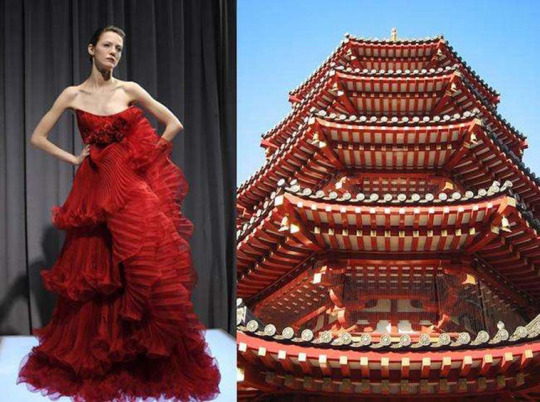
Marchesa Fall/Winter 2008 | Kawasaki Daishi. (Image via Marchesa and wine-montrachet)
Images Reveal How Much High Fashion Is Inspired By Architecture

Gareth Pugh Spring 2009 | Sir Norman Foster, Hearst Building, NY. (Image via Only Dope Fashion)
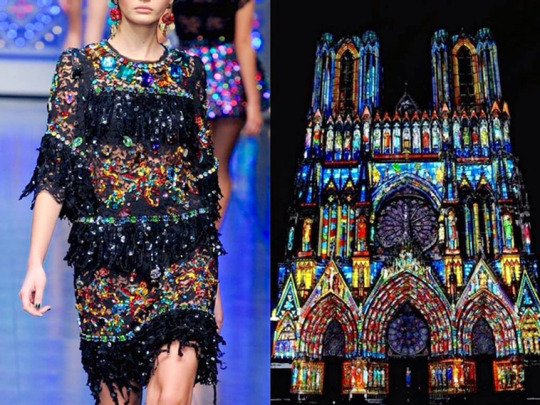
Dolce & Gabbana S/S 2012 | Cathedral Notre-Dame de Reims, France. (Image via Where I See Fashion)
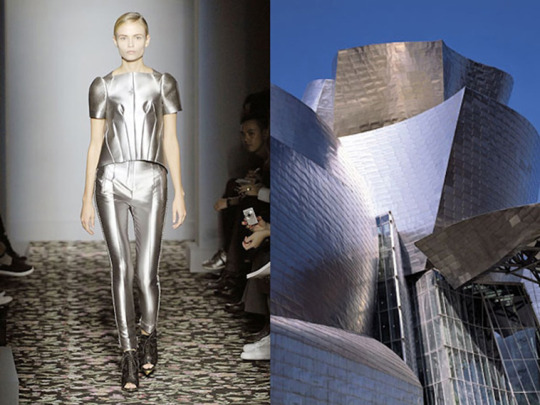
Balenciaga Spring 2008 | Guggenheim Museum, Bilbao, Spain. (Image via Scarfe Unravels)
#images#high fashion#architecture#marchesa#kawasaki daishi#gareth pugh#fashion designer#sir norman foster#hearst building#only dope fashion#photographer#dolce & gabbana#cathedral notre-dame de reims#france#where i see fashion#balenciaga#guggenheim museum#bilbao#spain#scarfe unravels
2 notes
·
View notes
Video
Way Out by johnshlau Via Flickr: The Futuristic Look some 20 years ago… Designed by Sir Norman Foster and opened in 1999, Canary Wharf is a London Underground station at Canary Wharf and is on the Jubilee line, between Canada Water and North Greenwich stations. Over 40 million people pass through the station each year, making it second busiest on the London Underground outside Central London after Stratford, and also the busiest that serves only a single line. Interestingly some scenes for 2016’s "Rogue One: A Star Wars Story" were filmed at this underground station during the hours when the line was closed to the public, from mid-night to 4am. Taken obviously during the non rush hours:-) Explore #11 (2023-10-06) - Thank you for stopping by and for your words of encouragement and favorites!
#Way Out#futuristic look#Canary Wharf Underground Station#Canary Wharf#Underground Station#Tube Station#Sir Norman Foster#Star Wars#Rogue One#non rush hours#tube#station#underground#escalators#futuristic#architecture#glass#London#UK#England#Explore#flickr
1 note
·
View note
Text






Dieter Rams for Braun, 1962/1963. Wall Mounted Audio 2/3 (components: control TS45, reel-to-reel tape recorder TG60, slim speakers L450, record player PCS5), (Image 1 credit: Matthew Donaldson) Dieter Rams design ethos was very clearly codified by himself in ten legendary principles for good design: 1. Good design is innovative; 2. Good design makes a product useful; 3. Good design is aesthetic; 4. Good design makes a product understandable; 5. Good design is unobtrusive; 6. Good design is honest; 7. Good design is long-lasting; 8. Good design is thorough down to the last detail; 9. Good design is environmentally friendly; 10. Good design is as little design as possible
Dieter Rams, Nicolas Ghesquière, Sir Terence Conran, Lord Norman Foster, Jasper Morrison and Sir Paul Smith are among the design stars to give their support to the protection of design patent rights.
more info: — https://braunaudio.de/en/braun-hifi-wall-unit-wandanlage-stereo-system-60ties/ — https://designwanted.com/design-icons-dieter-rams/
#dieterrams#design#braun#object#intemporal#contemporary#bauhaus#sound#equipment#music#product#productdesign#60s#70s#nicolas ghesquière#Sir Terence Conran#Lord Norman Foster#jasper morrison#paul smith#wallpaper magazine#patent#industrial design
40 notes
·
View notes
Text

Architect Sir Norman Foster. Hong Kong and Shanghai Banking Corporation Headquarters, 1986.
#art#design#photography#black#white#illustration#fashion#light#painting#portrait#architecture#shanghai
32 notes
·
View notes
Text
Hamilton battles to earn place in the history books; Motor racing
The Times, 27 Jul 2006 (by Edward Gorman)



BARRING a downturn in his superb form in the GP2 series, it seems increasingly likely that Lewis Hamilton will become the first Afro-Caribbean to drive in Formula One next season.
Ron Dennis, the team principal at McLaren Mercedes, who has supported Hamilton's career for 11 years, told The Times this week that the 21-year-old from Hertfordshire is on the verge of what he called an "inevitable" step up.
Speaking at McLaren's Pounds 250 million Sir Norman Foster-designed headquarters at Woking in Surrey, Dennis said that the plan with Hamilton has been that he should dominate each successive formula he races in, then move up.
With four race weekends left this season in GP2, the Formula One feeder series, Hamilton enjoys a 14-point lead over his nearest pursuer, Nelson Piquet Jr, having won or been second in six out of the 13 races.
This record includes two impressive doubles at the Nurburgring and Silverstone, where Hamilton won both races on Saturday and Sunday. This despite the Saturday winner dropping to eighth on the grid for the Sunday race. "He is dominating GP2," Dennis said, "and if that continues, there is an inevitability that he must move forward. The only place is Formula One. The question then arises, with whom?"
Under continual pressure to make known his plans for Hamilton, whom Dennis first met when the youngster was eight years old, the McLaren chief executive indicated that he has not ruled out the former Formula 3 Euroseries champion making the biggest leap of all, straight into a McLaren.
"He should be ready for the move (to Formula One) but there is a difference between a move into a mid-team and a top team," Dennis said. "The simple fact is it would be jumping into the deep end if we put him into one of our cars. There are, however, certain things that could unfold that would make the decision easier."
Dennis explained that if Fernando Alonso, who is set to join McLaren from Renault in the close season, does succeed in retaining his world title this year, that could make it easier for the team to go with Hamilton. "Certainly if Fernando is successful in his mission and we have a very mature two-time world champion in the car, that makes it easier, but it's not a decision taken," Dennis said.
Hamilton, who some have talked of as having the sporting and marketing potential of Tiger Woods, is regarded as a prodigiously talented driver with an intensity of focus that marks him out among his peers as a future champion at the highest level. As one experienced trackside observer who has watched him throughout this season put it: "Lewis is the perfect blend between (Alain) Prost and (Ayrton) Senna. He has that aggression and passion but he can control it and is very, very clinical."
The young man himself, who lists music, playing the guitar, playing squash and tennis and "chilling with family and friends" among his hobbies, has made his ambitions clear.
After his performance at Silverstone in June, where missing out on pole position was the only blip on an otherwise perfect points-scoring weekend, he talked of his drive to get into Formula One.
"I'm working my a*** off not only to do the best job possible but to get that McLaren seat," he said. "It's an opportunity not many get. If I can get that, I feel very confident I can make the best use of it."
What is bugging Dennis is not if to bring on Hamilton but when, given the likely explosion of media interest when he does take his place on the Formula One grid.
"I don't want to be a constraining force on his motor sport career but I think we've brought good judgment to bear on it and I don't want it to go wrong when he is so close to achieving his goals," Dennis said. "The only issue is timing the timing of his next move.
BEHIND THE WHEEL ROAD TO SUCCESS
Born: Stevenage. Age: 21
Christian names: Lewis Carl (after the US athlete, Carl Lewis)
Family background: Father, Anthony, born in England. Paternal grandfather emigrated from Grenada in 1950s
Started racing: Radio-controlled cars, aged 6
First big win: British Kart Champion, aged 10
Big break: Signed to the McLaren Driver Development Support Programme, aged 13
First world title: 2000 Karting world No 1, aged 15
First single-seater racing: 2002 Formula Renault, third
First senior world title: 2003 Formula Renault
Second senior world title: 2005 Formula 3 Euroseries
This season: Leads GP2 Formula One feeder series for the ART Grand Prix team
3 notes
·
View notes
Text

Designed by the London studio of British superstar architect Sir Norman Foster, this 120-meter-high skyscraper being constructed on the banks of the Danube is being called by some a symbol of modernity; by others a warning that big money, with the backing of Orban’s government, is set to radically transform the Hungarian capital, risking its status as a UNESCO World Heritage Site.
2 notes
·
View notes
Text
Blog #11
It is an incredible challenge for architects when they begin to plan a new building near an ancient structure. Making the new and old structures fit well together in one space can be approached in a few different ways. Some architects may choose to make the new building look similar to the older one, but that often brings criticism for feeling more fake. In the space around Maison Carrée, architect Sir Norman Foster created the design plans for Carré d’Art. Carré d’Art was designed to be a more modern and urban design that still adjusts to the space around it. The steel beams holding up the front overhang of the Carré d’Art can be seen as relating to the columns of Maison Carrée. The design choice to put 5 floors of the building underground was very smart as it respects the buildings around it, and does not make it tower over a historic ancient Roman temple. There are multiple ways an architect may choose to fit a new structure near an old one, and I believe the space around Maison Carrée is a great example to analyze.
0 notes
Text
History of the National Botanic Garden of Wales
Located in the center of Carmarthenshire, the National Botanic Garden of Wales is a hidden treasure that provides a special fusion of historical significance, scenic beauty, and educational opportunities. One of the best botanical gardens in the UK, it offers guests the opportunity to study a wide variety of plants, participate in interactive displays, and take in the tranquil surroundings. We will explore the history, attractions, and activities that make the National Botanic Garden of Wales a must-see location in this in-depth guide.
Let's now write a piece about the National Botanic Garden of Wales and the reasons you ought to go there.

A Historical Overview: From Ancient Estate to Modern Marvel
The National Botanic Garden of Wales is situated on the grounds of the former Middleton Estate, a site steeped in history dating back to the 17th century. The estate, originally owned by the Middleton family, played a significant role in the local economy and culture. Over the centuries, the estate changed hands several times, each owner leaving their mark on the landscape.
The Great Glasshouse: A Marvel of Modern Architecture
One of the most iconic features of the National Botanic Garden of Wales is the Great Glasshouse, the largest single-span glasshouse in the world. Designed by renowned architect Sir Norman Foster, this stunning structure houses a diverse collection of Mediterranean climate plants from around the globe. Visitors can explore the arid landscapes of South Africa, the lush greenery of Australia, and the vibrant flora of California, all under one roof.
More Read –
Barry Island Beach
Aberavon Beach
Explore the Garden’s Themed Zones: A Journey Through Plant Diversity
The National Botanic Garden of Wales is divided into several themed zones, each offering a unique perspective on the world of plants. Whether you are a seasoned botanist or a casual nature lover, there is something for everyone to enjoy.
Educational Programs and Workshops: Learning for All Ages
The National Botanic Garden of Wales is not just a place of beauty; it is also a center for education and research. The garden offers a wide range of educational programs and workshops designed to engage visitors of all ages. Whether you are interested in learning about plant science, gardening techniques, or environmental conservation, there is a program to suit your needs.

School Visits and Educational Tours
For schools and educational groups, the garden provides tailored tours and workshops that align with the national curriculum. These hands-on learning experiences are designed to inspire the next generation of environmental stewards, offering students a chance to explore the natural world in a fun and interactive way.
Gardening Workshops and Courses
For adults, the garden offers a variety of gardening workshops and courses, covering topics such as organic gardening, plant propagation, and sustainable landscaping. These workshops are led by experienced horticulturists and provide practical knowledge that participants can apply in their own gardens.
Events and Exhibitions: A Year-Round Calendar of Activities
The National Botanic Garden of Wales hosts a diverse range of events and exhibitions throughout the year, ensuring there is always something new to see and do. From seasonal festivals to art exhibitions and music performances, the garden’s event calendar is packed with activities that cater to all interests.
Seasonal Festivals and Celebrations
Throughout the year, the garden celebrates the changing seasons with a series of festivals and events. These include the popular Spring Bulb Festival, the Summer Fayre, and the Autumn Harvest Festival. Each event offers a unique opportunity to experience the garden’s seasonal highlights, with special displays, workshops, and family-friendly activities.
Related Article
Salt Spring Island Travel Guide
Mao Bay Beach
Bethells Beach Travel Guide
The 15 Best Spots for Beach Camping Florida
Practical Information: Plan Your Visit to the National Botanic Garden of Wales
To make the most of your visit to the National Botanic Garden of Wales, it is important to plan ahead. The garden is open year-round, with varying hours depending on the season. Visitors are encouraged to check the garden’s official website for the most up-to-date information on opening times, ticket prices, and upcoming events.
A Must-Visit Destination for Nature Lovers
The National Botanic Garden of Wales is a destination that offers something for everyone. Whether you are interested in horticulture, history, wildlife, or simply seeking a peaceful retreat, the garden provides a wealth of experiences that will leave you inspired and rejuvenated. With its rich history, stunning landscapes, and diverse attractions, it is no wonder that the National Botanic Garden of Wales is regarded as one of the UK’s premier botanical gardens.
And places to visit along with National Botanic Garden of Wales — Read our full blog to know all these known and unknown facts. Click Here
0 notes
Text

1976 in memoriam.
Mal Evans (British musical manager), 40
Howlin' Wolf (American singer & guitarist), 65
Agatha Christie (British writer), 85
Yagi Hidetsuga (Japanese electrical engineer), 89
Paul Robeson (American singer & actor), 77
The Blessed Friar Gabriele Allegra (Italian Catholic friar), 68
Lee J. Cobb (American actor)(pictured), 64
Sal Mineo; Jr. (American actor)(pictured), 37
E.H. Shepard (British artist & illustrator), 96
Richard Arlen (American actor), 76
Freddie Lennon (British sailor & singer), 63
Howard Hughes (American engineer & businessman)(pictured), 70
Miriam Cooper (American actress), 84
William Relf (British singer & guitarist), 33
Ruth McDevitt (American actress), 80
J. Paul Getty (American-British businessman), 83
Jimmy Dykes (American baseball player & coach), 79
Rear Adm. C. Wade McClusky; Jr. (American naval admiral), 74
Sir William Baker (British actor & producer), 48
Frederick Marberry (American baseball player), 77
Anna Michel (German victim of negligent homicide), 23
Norman Foster (American movie director & screenwriter), 72
Wong Jim (Chinese-American cinematographer), 76
Paul Gallico (American writer), 78
The Blessed Bishop Basil Hopko (Slovak Catholic bishop), 72
Friedrich Lang (Austrian-American movie director & screenwriter), 85
Mary Jones (American actress)(pictured), 18
CWO Robert Mellard (American army soldier), 57
Vice Marshal Raymond Collishaw (Canadian air force pilot), 82
Barbara Nickerauer aka Barbara Nichols (American actress), 47
Lt. Gen. Troy H. Middleton (American army general & college comptroller), 86
Cardinal Giacomo Lercaro (Italian Catholic cardinal), 84
Man Ray (American artist), 86
Godfrey Cambridge (American comedian & actor)(pictured), 43
Danny Murtaugh (American baseball player & manager), 59
Tommy Bolin (American guitarist & songwriter), 25
Alastair Sim (British actor)(pictured), 75
Jack Cassidy (American actor & singer)(pictured), 49
#Religion#Tributes#Celebrities#Music#U.K.#Mississippi#Illinois#Books#Japan#Movies#New Jersey#Pennsylvania#Italy#Boats#Money#Planes#Texas#Maryland#Virginia#TV Shows#Michigan#Minnesota#Sports#Baseball#New York#Germany#Indiana#New York City#France#Slovakia
0 notes
Text








Wat? Paul-Löbe-Haus, Marie-Elisabeth-Lüders-Haus, koepel Reichtag door Norman Foster en Mann auf der Leiter door Neo Rauch
Waar? Regeringswijk, Berlijn
Wanneer? 13 augustus 2024
Vanochtend staat er geen kunst op het programma, maar politiek. Ik krijg een rondleiding door de regeringswijk, gevolgd door een bezoek aan de zittingszaal van de Reichstag en afgesloten met een bezoek aan de koepel. De rondleiding geeft niet alleen een interessant beeld van de Duitse politieke praktijk, maar ook een toelichting op de architectuur van de regeringsgebouwen. Mijn hotel ligt op minder dan een kwartier lopen van de Reichtag en ik ben al meerdere malen langs deze gebouwen gelopen zonder precies te weten wat er daarin gebeurde.
Voor dit dagboek laat ik de Duitse politiek voor wat hij is en beperk me tot kunst. Architectuur is immers ontegenzeggelijk kunst. Zeker architectuur waarmee de regeringsgebouwen zijn vormgegeven. Alles straalt openheid uit, vandaar veel glas. Eerder was ik al erg gecharmeerd van de vormgeving van het Marie-Elisabeth-Lüders-Haus. Daarvan weet ik nu dat daarin onder meer het informatie- en documentatiecentrum, waaronder de bibliotheek, is ondergebracht. Het gebouw is met twee loopbruggen verbonden met het Paul-Löbe-Haus. De gebouwen zijn in oost-westrichting op één lijn geplaatst, wat fraai is vanwege de zichtlijnen. Daar komt bij dat ze de door Hiitler voor Reichthauptstad Germania geplande allee die noord-zuid liep doorkruist. Deze allee leidde naar de megalomane Volkshalle.
Vervolgens is er de koepel van de Reichstag, ontworpen door Sir Norman Foster. Ik had hem vaak uit de verte gezien, maar het reusachtige ding via de helling bestijgen is, enige hoogtevrees ten spijt, een bijzondere ervaring. De kegel met spiegels, bedoeld om de zittingszaal van daglicht te voorzien, neemt een centrale plaats in binnen de glazen koepel. Hoewel de bouw van de koepel destijds politiek omstreden was, is de toevoeging ervan een bijzonder fraai staaltje architectuur.
Alleen architectuur als kunst vanochtend? Toch niet! Aan het Paul-Löbe-Haus bevindt zich een sculptuur van Neo Rauch, die ik vooral als schilder van de Neue leipziger Schule ken. Het aardige is dat de sculptuur zowel buiten als binnen is aangebracht en door de weerspiegeling van de buitensculptuur lijkt het soms of er drie zijn in plaats van twee.
0 notes
Text
Architectural Walking Tours of London: Exploring the City’s Iconic Buildings

London, one of the most vibrant cities in the world, is renowned for its rich history and stunning architecture. Walking through the city is like stepping into a time capsule, with every corner revealing layers of its architectural legacy. From medieval churches to modern skyscrapers, London is a city that effortlessly blends the old with the new. Architectural walking tours provide a unique way to experience the city’s iconic buildings, allowing visitors to appreciate the stories behind the structures that shape the London skyline.
The Perfect Start: Westminster and Big Ben
A great starting point for an architectural walking tour of London is the Westminster area, home to some of the most famous landmarks in the city. Begin with a visit to Westminster Abbey, a UNESCO World Heritage Site. This stunning Gothic church has hosted royal coronations and weddings for centuries, making it a significant symbol of British heritage. Its intricate facade and magnificent interior are marvels of Gothic design, with soaring arches, elaborate stonework, and beautiful stained-glass windows.
Just across the road is the iconic Big Ben, part of the Palace of Westminster. While Big Ben refers specifically to the clock tower’s bell, the tower itself is an architectural masterpiece. Designed by Augustus Pugin in the Gothic Revival style, it stands tall and proud as one of London's most recognizable symbols. The intricate details of the tower, combined with its historical significance, make it a must-see for architecture lovers.
If you're planning a trip from India, particularly from Mumbai, numerous London tour packages from Mumbai offer guided walking tours that include these must-visit locations. These packages provide a seamless travel experience, with itineraries curated to cover London's most iconic buildings, ensuring you won’t miss any of the architectural highlights.
Exploring the Heart of the City: The Square Mile
Moving on from Westminster, the next stop on your architectural walking tour is The City of London, commonly known as the Square Mile. This part of the city is where ancient meets modern. As you wander through its streets, you’ll encounter both medieval architecture and cutting-edge modern structures.
Start with St. Paul’s Cathedral, a masterpiece by Sir Christopher Wren. This Baroque-style cathedral, with its massive dome, is one of the most stunning pieces of architecture in London. The intricate carvings, grand colonnades, and majestic interior make it a sight to behold. A guided tour will take you through its rich history, from the Great Fire of London to its role in royal ceremonies.
As you continue through the Square Mile, you’ll encounter London’s financial district, where sleek modern buildings dominate the skyline. The Gherkin (30 St Mary Axe), designed by Norman Foster, is one of the most iconic examples of contemporary architecture in London. Its distinctive, bullet-shaped design stands in stark contrast to the historical buildings surrounding it, creating a striking blend of old and new.
For visitors from Mumbai, the London tour package from Mumbai often includes a comprehensive tour of the Square Mile. These tours provide expert guides who will delve into the stories behind each building, offering a deeper understanding of how London’s architectural landscape has evolved over the centuries.
The Modern Marvels: South Bank and Beyond
Heading over to the South Bank, you’ll find another area of London that showcases an exciting mix of architectural styles. Start with the Tate Modern, housed in the former Bankside Power Station. This unique structure, with its imposing brick facade and towering chimney, has been transformed into one of the world’s leading modern art galleries. Its industrial design contrasts beautifully with the contemporary art displayed inside.
Just a short walk from the Tate Modern is the Millennium Bridge, a stunning piece of modern engineering that connects the South Bank with St. Paul’s Cathedral. Designed by Norman Foster, the bridge’s sleek and minimalistic design allows for uninterrupted views of the surrounding architecture.
Continuing along the South Bank, you’ll come across The Shard, the tallest building in the United Kingdom. Designed by Renzo Piano, this glass skyscraper stands at 310 meters and offers unparalleled views of the city from its observation deck. The building’s sharp, angular design gives it the appearance of a shard of glass piercing the sky, making it a true modern marvel.
Hidden Gems: Walking Through Historic Districts
While London’s iconic landmarks often steal the spotlight, some of the city’s most fascinating architectural treasures lie in its historic districts. Take a stroll through Covent Garden, where you’ll find beautifully preserved Georgian architecture. The cobblestone streets, quaint shops, and the grand Royal Opera House all contribute to the charm of this area.
Another must-visit is Leadenhall Market, a stunning example of Victorian architecture. This covered market, with its ornate roof and intricate ironwork, transports visitors back to the 19th century. It’s a wonderful spot to pause and admire the craftsmanship that went into creating such a visually stunning space.
A visit to Bloomsbury offers another glimpse into London’s architectural history. This district is famous for its garden squares and grand terraced houses, many of which date back to the 18th and 19th centuries. Bloomsbury’s architecture is a testament to London’s Georgian era, with its elegant facades and classic proportions.
Exploring London’s Skyscrapers
In recent years, London’s skyline has been transformed by an influx of modern skyscrapers. While these buildings may lack the history of their older counterparts, they represent the city’s constant evolution and ambition.
One of the most impressive skyscrapers is The Walkie Talkie (20 Fenchurch Street), known for its distinctive shape and the Sky Garden, an open-air garden located at the top of the building. The Cheesegrater (The Leadenhall Building), designed by Rogers Stirk Harbour + Partners, is another striking example of modern architecture. Its sloped profile is designed to preserve sightlines to St. Paul’s Cathedral, blending contemporary design with respect for London’s architectural heritage.
Why Choose an Architectural Walking Tour?
Architectural walking tours offer more than just a sightseeing experience. They provide a deeper connection to the city by highlighting the stories, styles, and history behind each building. Whether you’re fascinated by medieval cathedrals, Victorian markets, or modern skyscrapers, London’s architectural diversity ensures that there’s something for everyone.
For travelers looking for a comprehensive experience, London tour packages from Mumbai are an excellent option. These packages often include walking tours that take you through the city’s most iconic buildings, guided by experts who share the hidden stories behind London’s architecture.
Conclusion
London’s architectural walking tours offer a unique way to explore the city’s history and evolution. From the grandeur of Westminster Abbey to the cutting-edge design of The Shard, the city’s buildings tell the story of its past, present, and future. Whether you’re visiting for the first time or rediscovering familiar streets, these tours provide an unforgettable journey through the heart of one of the world’s greatest cities. So lace up your walking shoes, grab a map, and get ready to immerse yourself in the architectural wonders of London.
0 notes
Text
Project go-ahead for new Manchester United training grounds. Interior fitout design by Foster + Partners.
Manchester United will start a £50m revamp of the men’s first-team building at their Carrington training complex next week, with Sir Jim Ratcliffe stating this will transform it into a “world-class” facility and improve performance.

The project, led by the renowned architect Norman Foster, starts on Monday and is expected to continue throughout next season.
Ratcliffe said: “We want to create a world-class environment for our teams to win. When we conducted a thorough review of the Carrington training facilities and met with our men’s first-team players, it was clear the standards had fallen below some of our peers.

“This project will ensure Manchester United’s training ground is once more renovated to the highest standards. Lord Foster, a fellow Mancunian, has brought some great inspiration to the design, in conjunction with the Manchester United team and we look forward to seeing the improvement to the facilities but most importantly on the pitch.”
#architecture#design#fosterandpartners#manchester united#sports#training#facilities#revamp#retrofit#interior#office
0 notes
Text
Wilhelminapier en wilhelminakade.
De Wilhelminapier is een hoogstedelijk gebied op de Kop van Zuid in Rotterdam. Bestuurlijk valt het sinds 3 maart 2010 onder de deelgemeente Feijenoord (daarvoor onder Rotterdam Centrum).
Het langwerpig gebied is gelegen langs de Nieuwe Maas aan de voet van de Erasmusbrug en wordt sinds de eeuwwisseling gekenmerkt door hoogbouw en moderne voorzieningen. Nabij de Wilhelminapier is in 1997 het metrostation Wilhelminaplein geopend. Sinds 2001 bevindt het nieuwe Luxor Theater zich op de Wilhelminapier. Eind 2013 werd De Rotterdam, die ontworpen is door Rem Koolhaas opgeleverd. Dit gebouw is 150 meter hoog.
Vroeger was de Wilhelminakade, die over de gehele lengte van de pier loopt, een havenkade waarvandaan veel passagiersschepen naar Amerika vertrokken. De pier is een symbool geworden van de 19e- en 20e-eeuwse emigratie naar Amerika. De westelijke punt wordt het Koninginnehoofd genoemd. Hier staat sinds 2001 het grote gietijzeren beeld Lost luggage depot van de Canadese historicus en beeldend kunstenaar Jeff Wall als symbool van het afscheid dat emigranten hier namen van hun "vorige leven".
Hotel New York, het vroegere hoofdkantoor van de Holland-Amerika Lijn, is met zijn koperen gekoepelde torens een van de kenmerkende gebouwen. Na het vertrek van de HAL in 1971 werd een masterplan voor de herontwikkeling van het gebied ontworpen door Sir Norman Foster in 1992. Hij ontwierp in 2000 ook het World Port Center, de eerste hoogbouw die sindsdien het decor vormt achter Hotel New York.
In september 2014 deed de Oasis of the Seas, het grootste cruiseschip ter wereld, de scheepsterminal aan. Om schepen van deze omvang te kunnen ontvangen kreeg de terminal een nieuwe aanlegsteiger. Ook de rest van de Wilhelminapier wordt gemoderniseerd zodat er in de toekomst meer cruiseschepen kunnen aanleggen.
Foto's en Informatie komt van wikipedia.


0 notes
Text

Architectural Reflections: City Hall, Whitehall, and the Evolution of Political Power in the UK
The move from City Hall to the Crystal marks a significant shift in the architectural and political landscape of London, offering a unique lens through which to examine the interplay of power, authority, and the role of architecture in shaping political narratives. This relocation symbolizes more than just a change of address; it reflects broader questions about the representation of political power and its accessibility to the public.
City Hall: The Democratic Ideal
City Hall, designed by Sir Norman Foster and opened in 2002, has been a symbol of transparent governance and democratic engagement. Its unique spherical design, prominent location by the Thames, and open spaces like the Assembly chamber and ‘London’s Living Room’ exemplify a commitment to accessibility and public involvement. The building’s energy-efficient design also underscores a modern, forward-thinking approach to governance.
The decision to move to the Crystal, another exemplar of sustainable design, is driven by financial pragmatism and the promise of long-term savings. However, it also raises concerns about diminishing the symbolic status of the GLA and its accessibility. The Crystal, located in Newham, offers a different kind of visibility—one that aims to spur regeneration in a deprived area. This shift can be seen as a rebalancing of focus, from the iconic central skyline to the broader, more diverse needs of London’s suburbs.
Whitehall Palace: The Monarchical Ideal
In contrast, the historical context of Whitehall Palace offers a different perspective on the relationship between architecture and political power. Once the main residence of English monarchs, Whitehall Palace was an expansive and grandiose complex, epitomizing royal authority and the centralized power of the monarchy. Its destruction by fire in 1698, leaving only Inigo Jones's Banqueting House, symbolizes the transience of even the most imposing symbols of power.
Whitehall’s architectural splendor was both a reflection and an instrument of monarchical authority. The Banqueting House, with its classical Palladian style, was intended to project the timelessness and legitimacy of the monarchy. However, the financial and symbolic excesses of such a grand project were ultimately unsustainable and disconnected from the public, mirroring the fate of King Charles I, who was executed outside this very building.
Architectural Reflections on Power and Authority
The juxtaposition of City Hall and Whitehall Palace encapsulates two sides of an architectural argument about power and authority. City Hall’s modern, accessible design represents a democratic vision, where architecture serves as a tool for transparency and public engagement. The move to the Crystal, while economically and environmentally motivated, challenges this ideal by potentially reducing the visibility and symbolic centrality of London’s government.
On the other hand, Whitehall Palace represents the historical notion of power as grand and imposing, yet ultimately vulnerable to the forces of political and public discontent. Its partial destruction and the absence of its once-expansive complex highlight the impermanence of centralized, authoritarian power.
The Health of the Nation
These architectural narratives reflect broader themes about the health of the UK’s political landscape. An empty City Hall for the mayor signifies a potential detachment from the public, mirroring the fate of Whitehall’s opulence, which failed to sustain its authority. This detachment can erode trust and engagement, crucial for a healthy democracy.
Conversely, the move to the Crystal could represent a shift towards a more inclusive and regionally balanced approach to governance, recognizing that power and attention should not be confined to iconic central locations but spread across the city to address diverse needs. However, this move must be managed carefully to avoid perceptions of diminishing the centrality and transparency of government.
In conclusion, the architectural stories of City Hall and Whitehall Palace offer profound insights into the nature of political power and authority. The transition from the iconic City Hall to the Crystal symbolizes a potential shift in how power is perceived and exercised, challenging the historical precedent set by Whitehall. This ongoing dialogue between architecture and politics underscores the need for a balance that maintains public engagement and trust, ensuring the health and vitality of our nation.
1 note
·
View note
Text


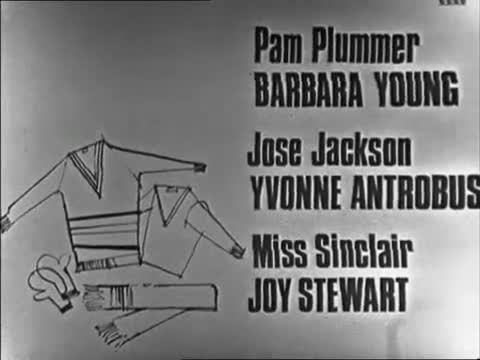
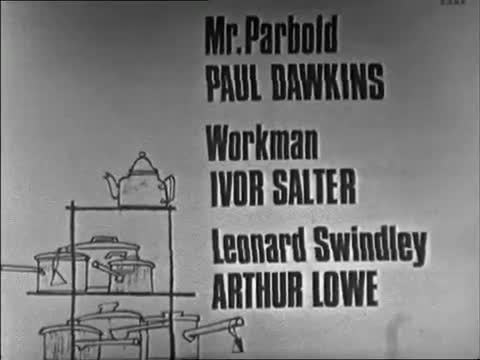




Pardon the Expression - ITV - June 2, 1965 - June 27, 1966
Sitcom (36 Episodes)
Running Time: 30 minutes
Stars:
Arthur Lowe as Leonard Swindley
Betty Driver as Mrs Edgeley
Joy Stewart as Miss Sinclair
Paul Dawkins as Ernest Parbold (series 1)
Barbara Young as Pam Plummer (series 1)
Holly Doone as Mavis Foster (series 1)
Robert Dorning as Wally Hunt (series 2)
Anthony Sharp as Brigadier Hawk (series 2)
John Le Mesurier as Sir Charles Dobson (series 2)
Julian Holloway as Norman Burton (series 2)
John Barron as Lord Penge (series 2)
1 note
·
View note
Text
Blueprint for Inspiration: Top 5 Influencers for Architecture Students to Follow
In the ever-evolving world of architecture, staying inspired and informed is crucial for those studying the craft. Architecture students, in particular, stand at the threshold of tradition and innovation, eager to leave their mark on the skyline of our future. In this digital age, one of the most accessible sources of inspiration and learning comes from following the influencers who shape contemporary architectural discourse. These thought leaders not only showcase the latest trends and technologies but also provide insights into the creative process, sustainability practices, and the social responsibilities of modern architecture. Here are the top five influencers that every architecture student should follow to fuel their creative journey.
1. Bjarke Ingels: Pioneering Sustainable Innovation
Bjarke Ingels, the founder of BIG (Bjarke Ingels Group), is renowned for his innovative approach to sustainable architecture and design that's both aesthetically pleasing and functionally smart. Ingels' projects, ranging from residential buildings to large urban spaces, are celebrated for their creativity and their focus on social and environmental sustainability. Following Bjarke Ingels offers students a window into the process of integrating green technologies and innovative materials in modern architecture, making sustainability not just an option but a desirable standard.
2. Zaha Hadid Architects: Legacy of Innovation
The late Zaha Hadid left behind a legacy that continues to inspire through the ongoing work of her firm, Zaha Hadid Architects. Known for her revolutionary designs and fluid forms that push the boundaries of architecture, Hadid's firm continues to be at the forefront of technological and material innovation. For architecture students, following Zaha Hadid Architects is a masterclass in how daring designs can become reality, showcasing projects that blend art, architecture, and engineering in unprecedented ways.
3. Norman Foster: Blending High Tech and Culture
Sir Norman Foster, the mind behind Foster + Partners, has significantly influenced contemporary architecture with his high-tech designs that blend cultural sensitivity with sustainability. Foster's work, which includes iconic structures like The Gherkin in London and the Apple Campus in California, exemplifies how technology can be harnessed to create buildings that are not only functional but also symbols of cultural identity. Students can learn from Foster the importance of integrating technology with an understanding of the cultural and social context of architecture.
4. Alejandro Aravena: Socially Responsible Architecture
Alejandro Aravena, a Chilean architect known for his focus on socially responsible architecture, offers a different but equally important perspective. His work, particularly with the “half a good house” concept, demonstrates how architecture can address social and housing challenges by engaging communities in the design process. Following Alejandro Aravena can inspire students to think about architecture beyond aesthetics and functionality, considering its impact on social equity and community empowerment.
5. Jeanne Gang: Advocating for Community and Ecology
Jeanne Gang, the founder of Studio Gang, is recognized for her research-based approach to design that emphasizes relationships between individuals, communities, and environments. Her projects often explore the potential of architecture to foster community engagement and ecological sustainability. Gang’s work, such as the Aqua Tower in Chicago, challenges students to consider how buildings can contribute to the fabric of communities and the health of the planet.
Following for Growth and Inspiration
In addition to showcasing groundbreaking projects, these influencers often share their thoughts on the future of architecture, their design process, and the challenges they face, providing a holistic view of what it means to be an architect today. Following these influencers can help architecture students:
Stay Updated: Keeping abreast of the latest trends, technologies, and materials in the field.
Learn from Masters: Understanding the thought processes and philosophies that guide the work of leading architects.
Inspire Creativity: Seeing innovative designs and approaches to problem-solving can spark new ideas and creative solutions.
Think Globally: Appreciating how architecture interacts with various cultural, social, and environmental contexts around the world.
Network and Engage: Engaging with the broader architecture community, providing opportunities for networking, collaboration, and discussion.
Building Your Path
For architecture students, following these influencers is more than just a source of inspiration; it's a window into the future of architecture. It offers lessons in creativity, sustainability, and the social role of the architect in the 21st century. As students embark on their architectural journeys, these influencers can serve as beacons, guiding them through the challenges and opportunities of modern design. By observing, learning, and occasionally questioning the work of these masters, students can forge their paths in the architectural landscape, armed with the knowledge and inspiration to innovate and impact the world around them.
1 note
·
View note